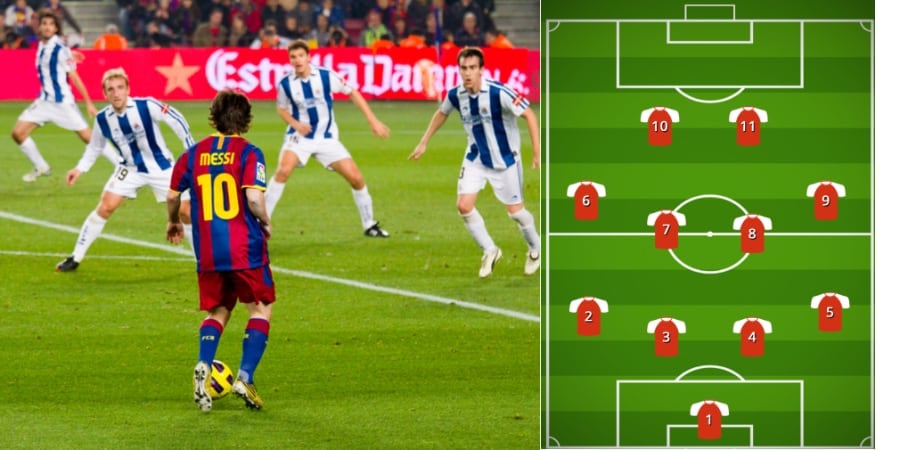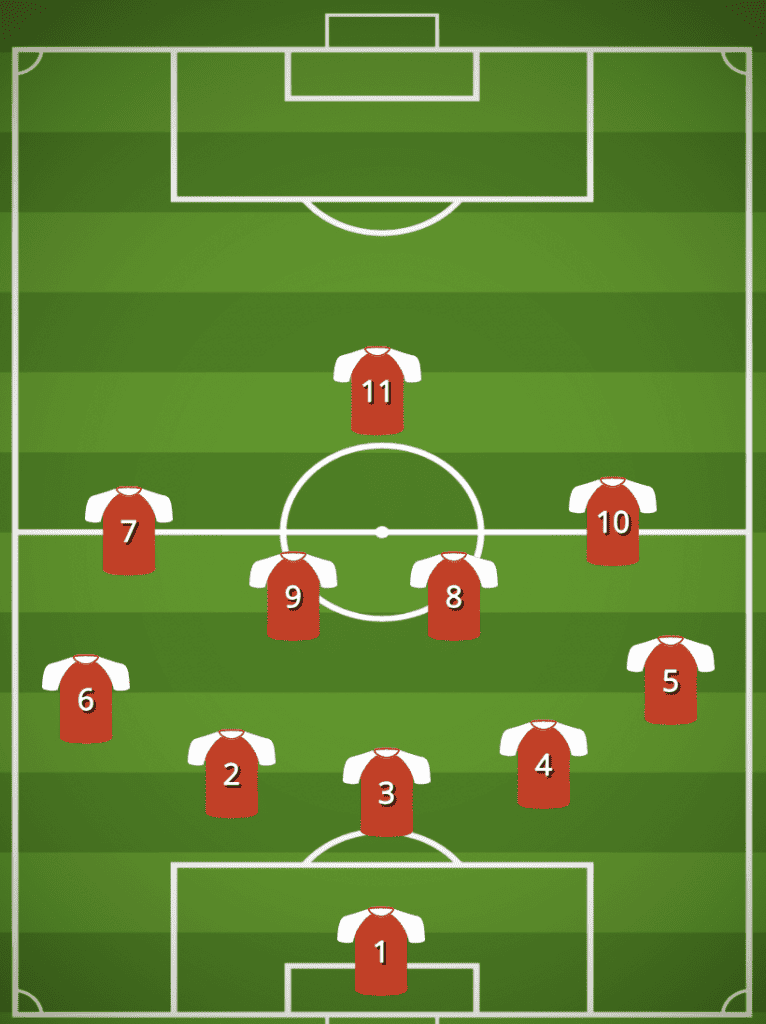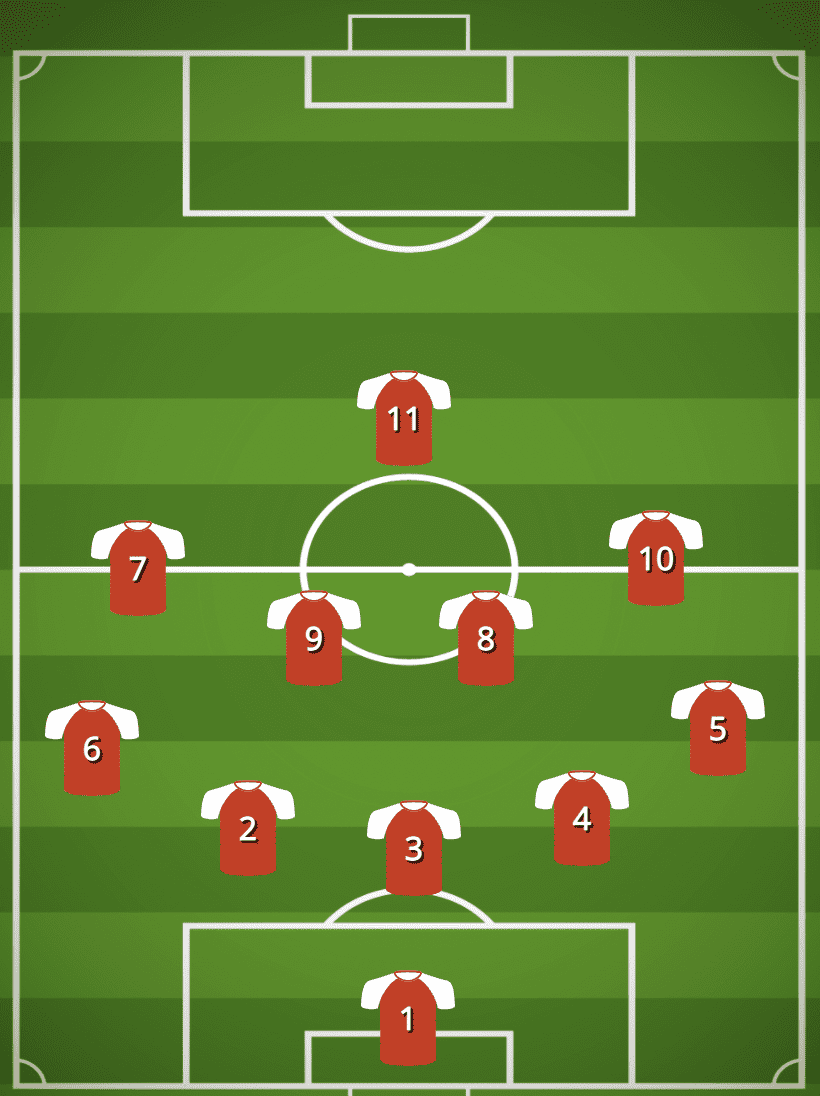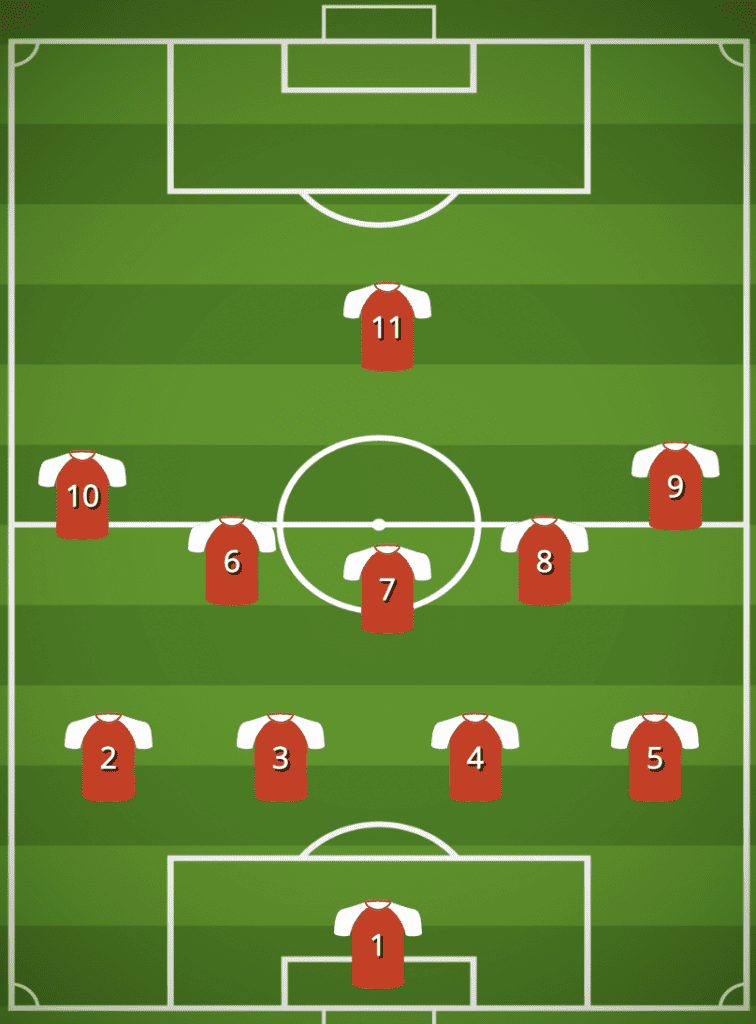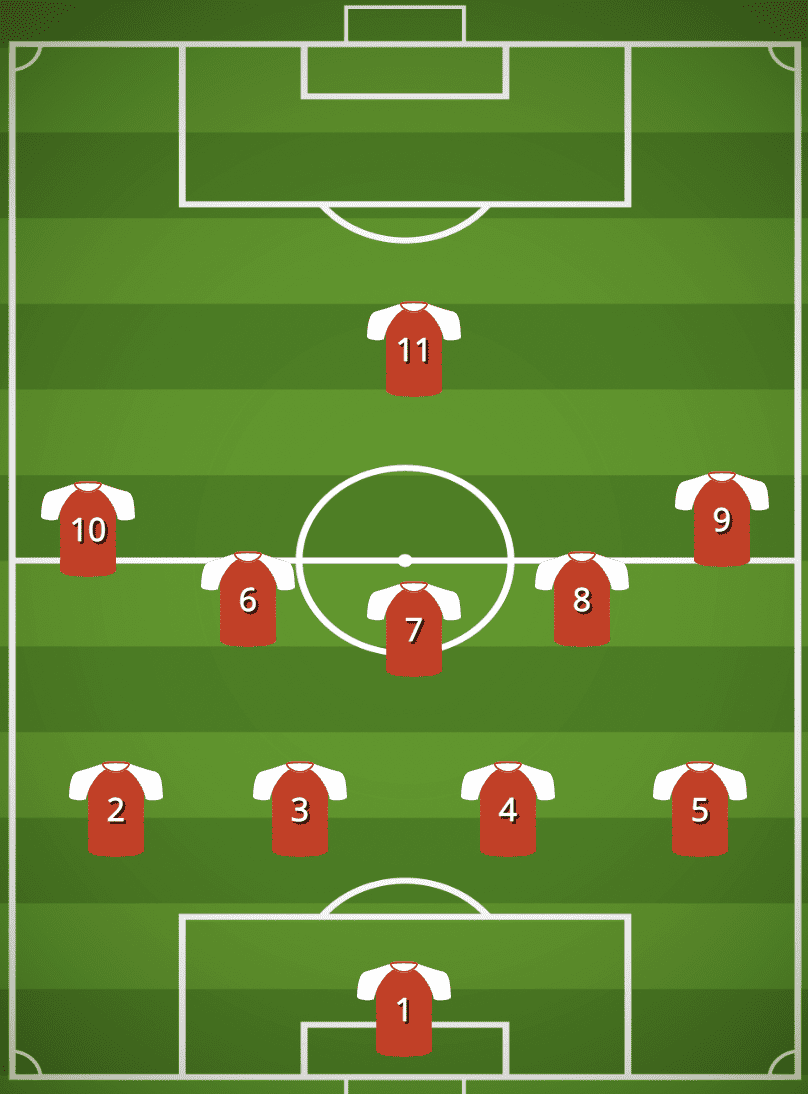While having a squad of skilled and talented players is desirable for any team, the reality is that not all teams have the same level of ability. Some teams may have slower or weaker players who still give their all on the field. It’s crucial for these teams to find a formation that can cover their deficiencies and allow them to play to their strengths.
Bạn đang xem: 4 Best Formations For a Slow & Weaker Team
In this article, we’ll explore four of the best formations for teams with slower and weaker players. These formations can help them maintain a competitive edge against stronger opponents. By staying compact and having players who can cover for each other in both offensive and defensive play, these teams have a better chance of success.
4. 5-4-1 Formation
The 5-4-1 formation is an excellent option for teams that face aggressive opponents and need extra defensive support. By overloading the defense with five players, the team can effectively cover for their lack of pace. The four midfielders drop deeper to provide additional coverage.
While this tactic has its challenges, such as coordinating the offside trap and potential isolation of the lone striker, its focus is on compensating for the team’s slower and weaker players. The two midfielders on each wing serve to hold a wide midfield role, providing crosses into the penalty area and extra cover for the fullbacks.
Pros:
- A defensively excellent tactic.
- Overloading the defense compensates for slower defenders.
- Maintains compactness for simple passes.
- Difficult to score against.
Cons:
- Takes time to score offensively.
- Vulnerable if the offside trap is broken.
- The lone striker can become isolated without midfield support.
- Slower in breaking quickly after winning possession.
3. 4-5-1 Formation
The 4-5-1 formation is a slightly more attacking variant of the 5-4-1 formation. By pushing an additional player into midfield, it allows for a higher press and better control of the game. With five midfielders, the team can offset weaknesses and take advantage of opponents if they close down quickly.
Unlike the 5-4-1 formation, the 4-5-1 includes wingers who can support the lone striker. The three central midfielders provide cover in the middle of the pitch. This formation offers flexibility, simplicity, and the opportunity for weaker teams to defend and attack in numbers.
Pros:
- Provides more fluidity in attack.
- Defensively sound with quick closing down.
- Enables weaker teams to defend and attack as a unit.
- Allows for attacking with numbers and maintaining defensive cover.
Cons:
- Strong opposing sides can find ways to bypass the midfield.
- The midfield can tire quickly from constant closing down.
- Vulnerable to passing attacks against stronger teams.
2. 4-1-4-1 Formation
The 4-1-4-1 formation allows a weaker and slower team to maintain a structure they are comfortable with. It provides options for slower players under pressure and offers additional cover for the defense and midfield.
The defensive midfielder plays a key role, providing extra defensive solidity and flexibility in either dropping back or moving forward depending on possession. The lone striker’s main task is to apply pressure and hold up the ball until the midfielders arrive. This formation favors passing angles and can help offset weaknesses in a weaker team.
Pros:
- Defensive midfielder enhances defensive solidity.
- Multiple passing options with a bank of four players.
- Allows slower teams to stay in position and absorb pressure.
Cons:
- Sacrifices attacking threat for defensive security.
- Lack of goal threat can lead to opponent overloading the defense.
- Requires good fitness and closing down when not in possession.
1. 4-4-2 Formation
The 4-4-2 formation is one of the most widely used formations in soccer. It has been a successful choice for teams with less talented players. This formation maximizes the use of two banks of four, with a solid defensive line and midfielders marshaling the center of the pitch.
What sets this formation apart is the utilization of two strikers who play an offensive role, forcing the opposition backward. Slow and weaker teams can employ long balls to the front players, relieving pressure on the defense and maintaining pressure on stronger opponents.
Pros:
- Forces opponents to defend in their own half.
- Familiar to many players.
- Balances defensive solidity and offensive threat.
- Suitable for slower and lower-quality players.
Cons:
- Can be predictable against teams of a higher quality.
- Less defensive security without a defensive midfielder or extra defender.
- Vulnerable to quick turnarounds in possession if the strikers cannot hold up the ball.
FAQs
Q: Which formation is best for a slow and weaker team?
A: The choice of formation depends on the level of the opposition. The 5-4-1 or 4-1-4-1 formations are ideal against faster teams, providing additional defensive cover. The 4-5-1 or 4-4-2 formations are great choices against slightly stronger teams, allowing for more midfield control and attacking options.
Q: Can slower and weaker teams achieve success with these formations?
A: Absolutely. While the right formation is important, hard work, commitment, and closing down opponents are essential for success. These formations offer a strategic advantage, but it’s the players’ effort that ultimately determines the outcome.
Conclusion
Each of the four formations discussed in this article offers benefits for teams with slower and weaker players. The choice depends on the level of the opposition and the team’s specific strengths and weaknesses. By selecting the appropriate formation and working hard, a slower or weaker team can still achieve excellent results. Remember, success in soccer is not solely determined by talent, but by dedication and effort.
Nguồn: https://movin993.com
Danh mục: Tin tức

